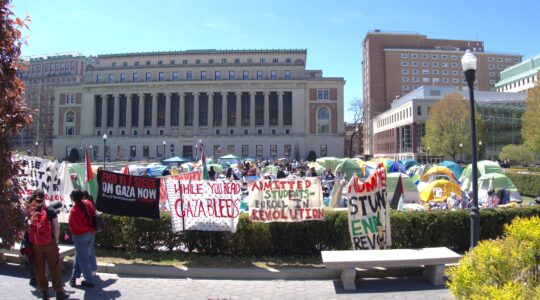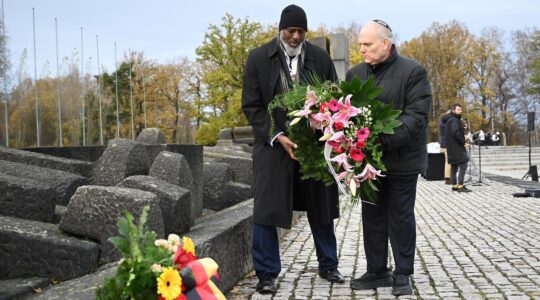To the Editor:
The photograph illustrating the JTA article “Pressure mounts on Palestinians to abandon U.N. statehood gambit" shows a billboard-like drawing outlining Jerusalem’s Old City walls and the Dome of the Rock, with “We will return” written above in English and Arabic. In the foreground is a bloodied forearm thrust through barbed wire, the fist clenching an oversized key.
The caption soothingly reads, “An Arab man passes graffiti in the Gaza Strip town of Rafah that expresses Palestinian aspirations for statehood," and the photo credit goes to Abed Rahim Khatib/Flash 90.
The colorful, well-drawn image expresses a Palestinian aspiration to end Jewish statehood via the so-called “right of return” to homes inside Israel (hence the predominant key image) abandoned by Arab refugees in 1948.
The article itself refers twice to Israel in “the 1967 borders,” once to “the 1967 lines.” The distinction is critical; lines is correct, borders erroneous and misleading.
Among critical issues in Israeli-Palestinian diplomacy is the demarcation between Israel and the West Bank. Currently it’s the 1949 Israeli-Jordanian armistice line, as noted on the map accompanying the entry for "West Bank" in the "CIA World Fact Book." Armistice lines are, by definition, temporary. Borders, by contrast, are internationally recognized as permanent. Israel has borders with Lebanon and Egypt, for example, but not the West Bank.
U.N. Security Council Resolution 242, adopted in 1967 and the basis for subsequent Arab-Israeli negotiations, calls for, among other things, a settlement leading to a “secure and recognized” border between Israel and its eastern neighbor. If such a border existed, it would not be subject to debate today.
Eric Rozenman
Washington Director
CAMERA-Committee for Accuracy in Middle East Reporting in America
JTA has documented Jewish history in real-time for over a century. Keep our journalism strong by joining us in supporting independent, award-winning reporting.





